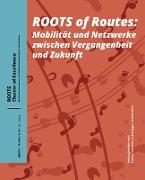The Language of Continent Allegories in Baroque Central Europe
BücherAngebote / Angebote:
The iconography of the four continents dates back to 16th and early 17th centuries, at a time when Europe's vision of the world was changed dramatically by discovery and conquest of the New World. Its peak of dissemination was reached in the 18th century. The late Baroque claims a special role for two reasons: The first is the large number of reproductions and applications during this period, the second is the multifaceted significance these allegories enjoyed. They could be inserted into religious and liturgical settings as well as into political language or that of the history of civilization and mankind. "Language" in this sense means that the continent allegories were less the object of an art historical interpretation than being considered a formative part of religious, liturgical, political, historical and other discourses. As pictorial language they were interwoven with text, dogmas, narratives and stereotypes. Thus the authors of this volume inquire what the allegories of the four continents actually meant to people living in the Baroque age.
Die Ikonografie der vier Erdteile geht auf das 16. und 17. Jahrhundert zurück. Ihre Entstehung verdankt sich der Entdeckung Amerikas und den damit einhergehenden Veränderungen in Europas Bild von der Welt. Rasch fand die Ikonografie Verbreitung und erreichte mit der Eroberung der Dorfkirche im 18. Jahrhundert eine bis heute einzigartige Dichte in Zentraleuropa. Ihre Verwendung reichte von religiösen und liturgischen Kontexten über die politische Bildsprache bis hin zu zivilisationsgeschichtlichen Narrationen. Die Erdteilallegorien "sprechen" als formative Teile religiöser, liturgischer, politischer, historischer und anderer Diskurse. Als Bildsprache wurden sie mit Texten, Dogmen, Erzählungen und Stereotypen verknüpft.
Die Beiträge dieses Bandes gehen aus unterschiedlichen historisch-kulturwissenschaftlichen Perspektiven der Frage nach, welche Bedeutung die Erdteilallegorien für die Menschen des 18. Jahrhunderts hatten.
Folgt in ca. 2-3 Arbeitstagen




